50 Feel-Good Facts Guaranteed to Make You Smile

It’s a little hard to stay cheery amid the COVID-19 pandemic—especially when you’re stuck inside almost all the time. Fortunately, there are endless fun and distracting trivia tidbits that can instantly cheer you up, if you know where to look. For example, have you heard about quokkas, the adorable animals that always look like they’re smiling? Or did you know that the voice actors behind Minnie and Mickey Mouse were married in real life? Prepare to feel less cooped-up and more inspired with our list of feel-good facts! And for more trivia to cheer you up, check out 40 Happy Facts That Will Put a Smile on Your Face.
1
Bobbing for apples started as a British courting ritual.
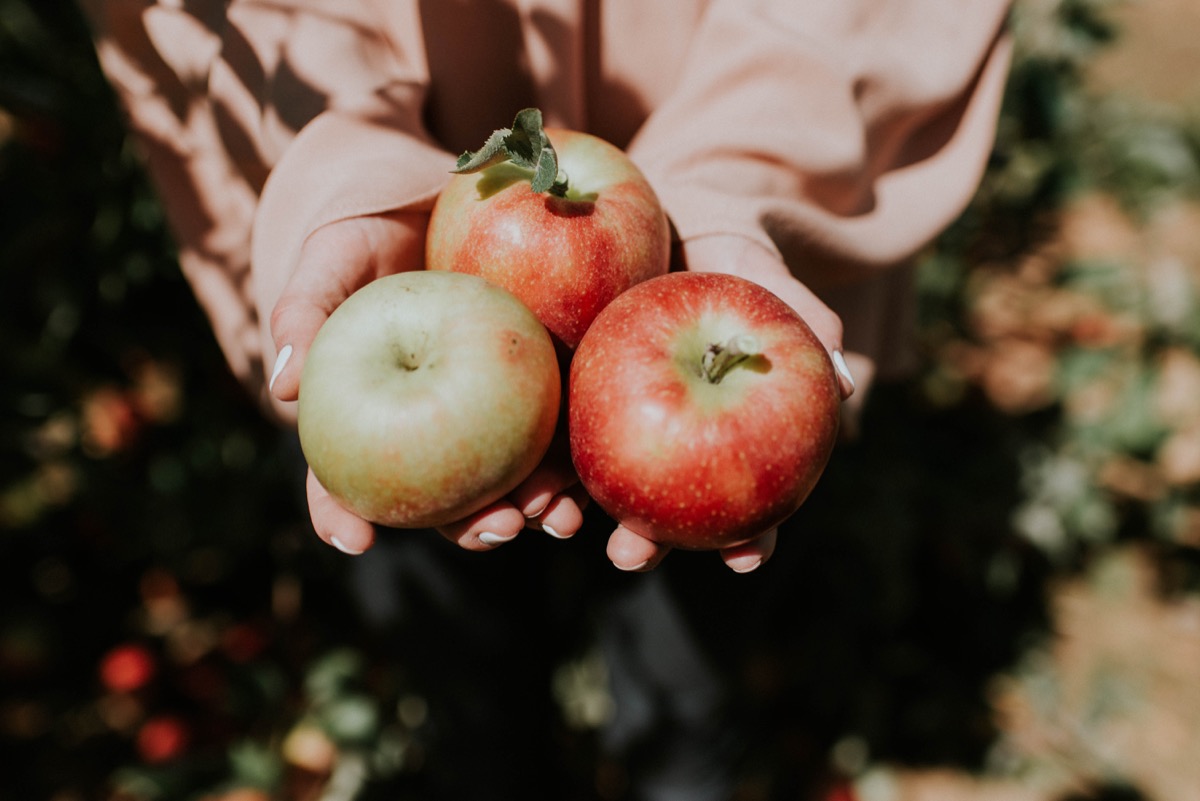
Today, bobbing for apples is a popular party game. But it turns out, the quirky activity started as an 18th-century British courting ritual, according to the History Channel. In one set of rules, each apple was assigned to a potential suitor. The bobber would attempt to bite into the apple associated with her preferred beau. If she bit it on the first try, they would be destined for love. If it took her two tries, their love would sizzle and then fade. If it took her three, their relationship would be doomed.
2
Bats sing love songs.
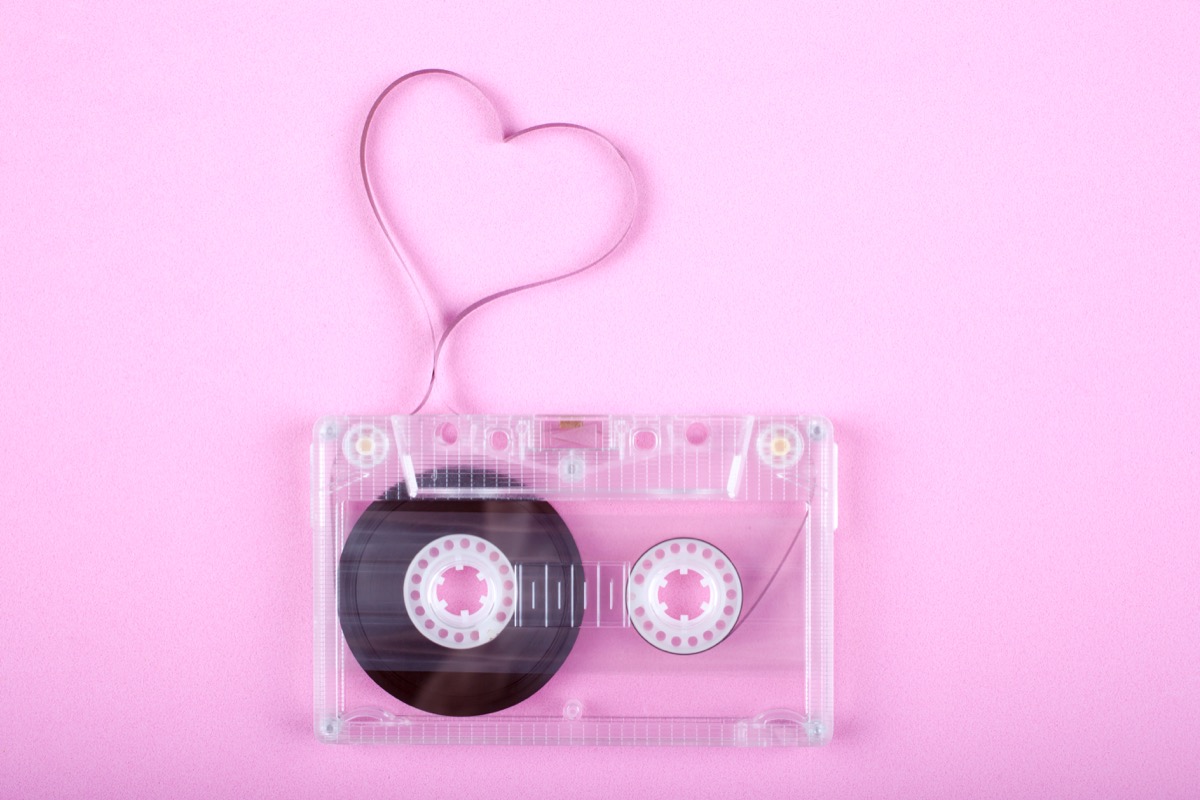
Humans aren’t the only creatures who sing to our sweeties—lots of animals do, too! In one notable 2009 study published in the journal PLOS One, researchers in Texas found that Brazilian free-tailed bats have distinguishable syllables and phrases that they use as love songs to attract suitors.
“The sounds are made in a specific, arranged pattern to form a song, and there are actually organized sequences within each phrase. They are made to attract and lure nearby females,” lead researcher Kirsten Bohn said in a statement.
3
Mister Rogers’ mom knit all his sweaters.

Along with his reputation for being one of the nicest men in America, Fred Rogers was also well known for his signature zip-up cardigans. But if you thought you could easily buy the same sweater as everyone’s favorite neighbor, you’re out of luck. In one episode of Mister Rogers’ Neighborhood, he revealed that his mother had hand-knit each of them. And if you’re looking for more trivia to help you kill time, try these 100 Totally Useless Facts That Are Too Entertaining for Words.
4
Smiles are innate, not learned.

It’s heartening to know that your most joyful reaction is something you’re simply born wanting to do. “Individuals blind from birth could not have learned to control their emotions in this way through visual learning, so there must be another mechanism,” San Francisco State University psychologist David Matsumoto said in a statement. “It could be that our emotions, and the systems to regulate them, are vestiges of our evolutionary ancestry.”
5
And quokkas are adorable animals that always look like they’re smiling.
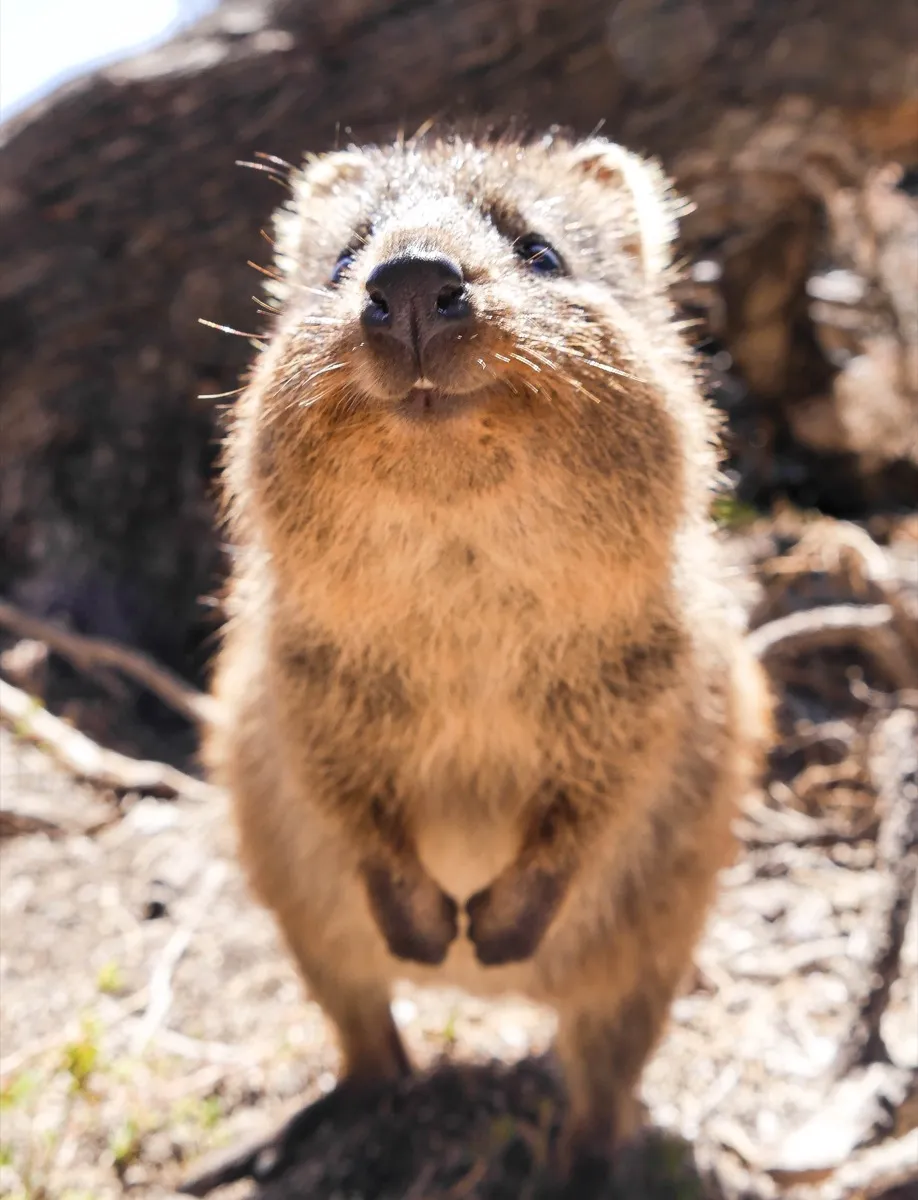
Go ahead, look at that face for as long as you’d like. While there are plenty of cute animals out there, there aren’t any others that look as perennially chipper as the quokka. Found on the small islands off the coast of Western Australia, these marsupials have a charming bone structure that makes them look like they’re grinning from ear to ear. Some people have even dubbed them the “happiest animal in the world,” according to National Geographic.
6
There’s a word in the Philippines for the urge to pinch or squeeze something that’s cute.

If you can’t stop yourself from picking up an adorable puppy and hugging it close, then you need to know the Tagalog word “gigil,” which, in the Philippines, describes the seemingly irresistible urge to squeeze things that are cute. And for more words you didn’t know, check out these 33 Funny Dictionary Words You Didn’t Know Actually Existed.
7
A woman makes custom dolls for children who have various physical conditions.

Amy Jandrisevits knows that kids want to see themselves represented in the world around them—and that includes in their toys. That’s why the Wisconsin resident makes custom dolls that have scars, birthmarks, various physical conditions, and disabilities that match the children she’s making them for. “It makes them not feel so alone,” Jandrisevits told CBS News of her business, A Doll Like Me. “Their logical brain knows this is just a doll. But the very innocent child part of them still feels like, ‘Now I’m not the only one that looks this way.’”
8
A village in India plants trees every time a baby girl is born.

When the leader of Piplantri, a small village in Rajasthan, India, lost his 16-year-old daughter in 2006, he decided to turn his grief into something beautiful. In order to ensure that the village treasured each baby girl (since daughters were not traditionally valued as much as sons), he set up an initiative that sees trees planted every time a girl is born in the village, according to The Guardian.
The new baby’s parents also sign a legal affidavit confirming their daughter will receive an education and will not be married before she is of legal age. As of 2018, 350,000 trees had been planted.
9
Earth’s ozone layer is healing.

Because of pollution, the Earth’s ozone layer has seriously suffered. And of course, that’s no good for anybody, since the fragile gas layer protects our planet and shields us from the sun’s harmful ultraviolet rays. That’s why it’s such a relief that climate change experts believe that the ozone layer will fully heal within 50 years, according to a 2018 report from the United Nations.
The recovery is thanks in large part to the Montreal Protocol of 1987, which put a global ban on the use of one of the main culprits for the damage: chlorofluorocarbons (CFOs). Previously, CFOs had been common in refrigerators, aerosol cans, and dry-cleaning chemicals. And for more trivia that will make you feel smarter, study these 50 Science-Backed Health Facts That Will Blow Your Mind.
10
The voice actors for Mickey and Minnie Mouse were married in real life.

Mickey Mouse and Minnie Mouse have had one of the most enduring romances in Hollywood history. But behind the scenes, their story is even sweeter: Wayne Allwine, the man who voiced Mickey, fell in love with and married Russi Taylor, the woman who provided the voice for Minnie. “We just started hanging out as pals, and the next thing you know, we were an item,” the late Taylor recalled to Variety of her husband, who died in 2009. “We just had fun. He was the best. He was a wonderful man, he was a good man, and he was a kind man.”
11
The man who invented the polio vaccine could have made billions by patenting it, but purposefully didn’t.

When Jonas Salk created the polio vaccine, he could have patented it and made an estimated $7 billion, according to Forbes. Instead, he chose not to do that. On April 12, 1955, when CBS’s Edward R. Morrow asked the scientist who owned the rights to the vaccine, Salk replied, “Well, the people, I would say. There is no patent. Could you patent the sun?”
12
Lucky charms really do work if you believe in them.

Do you have a horseshoe hanging over your door or a lucky penny in your wallet? Some superstitious people believe that certain objects can attract good fortune and, in a way, they’re totally right. In a 2010 study published in Psychological Science, people who brought a “lucky charm” with them to take a series of memory and analog tests performed better than those who did not.
13
More millennials give to charity than any other generation.
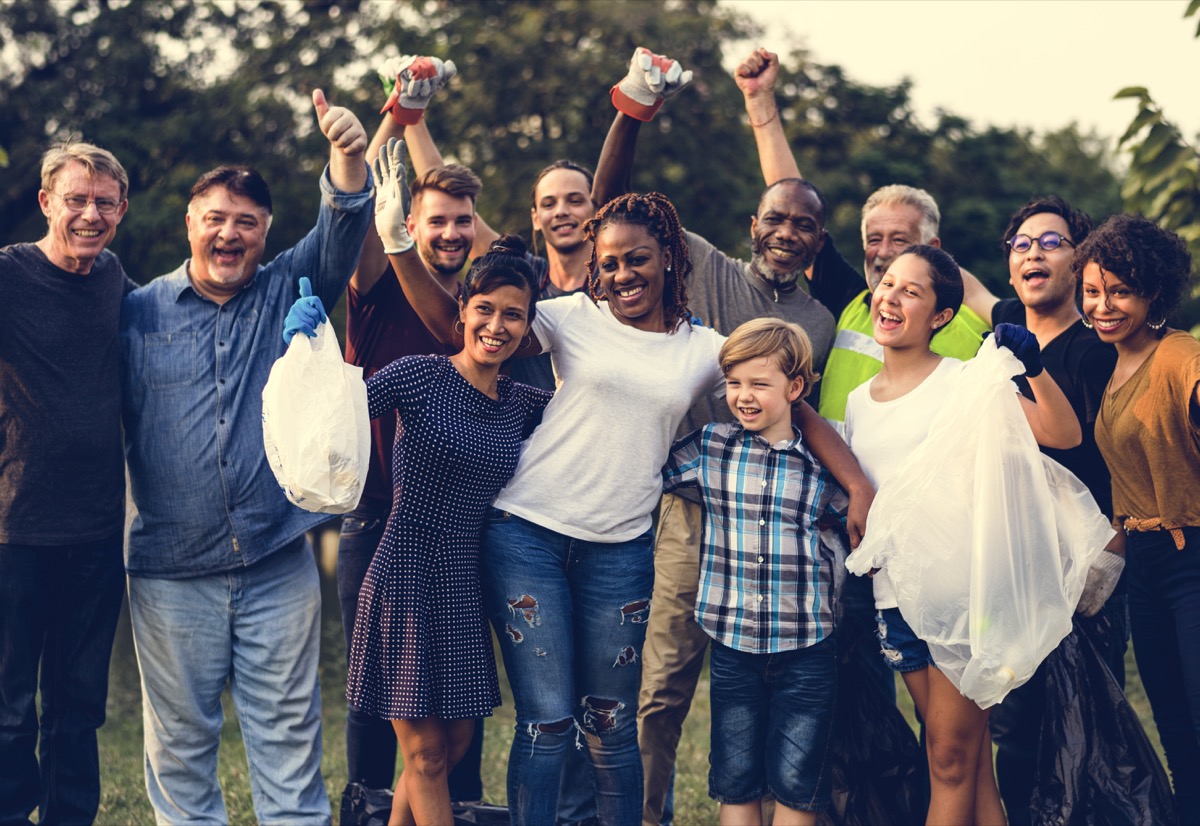
Turns out, more millennials donate to charity than any other generation, according to 2018 research by fundraising firm Blackbaud. The researchers found that while 84 percent of millennials donate to charitable organizations, just 72 percent of baby boomers and 59 percent of Generation X do the same. It just goes to show that we’re moving toward a kinder, more charitable world.
14
Volunteers in Canada reply to letters to Santa from around the world.

When children write a letter to Santa Claus around Christmas, most of the mailed messages end up in Canada (you can send them to Santa Claus, North Pole, Canada HOH OHO). That’s where Canada Post volunteers reply to the millions of letters that come in each year in more than 30 different languages, including braille.
15
And people who volunteer live longer.
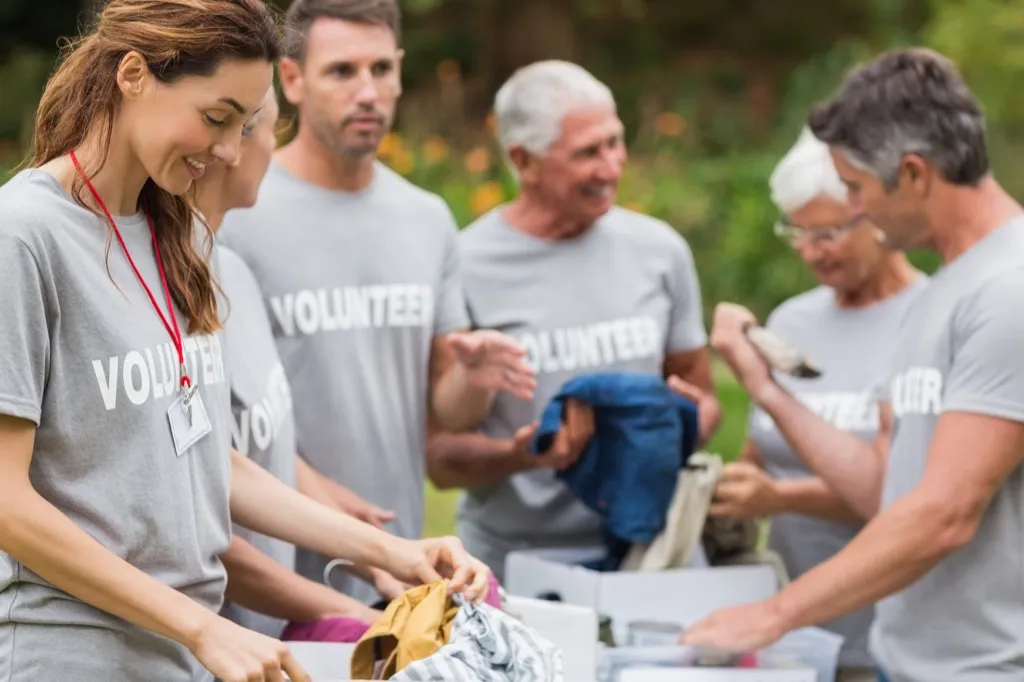
Volunteering your time or money won’t only help others, it could also help you. One 2011 study from the University of Michigan found that people who volunteer for selfless reasons live longer than those who don’t volunteer at all. Those who volunteer for more self-centered reasons, such as looking good in their community, don’t experience the same benefits.
“This could mean that people who volunteer with other people as their main motivation may be buffered from potential stressors associated with volunteering, such as time constraints and lack of pay,” said researcher Sara Konrath.
16
The most couples kissing under a mistletoe was 340… and it was for charity!

In 2018, four 13-year-old friends in Dallas, Texas, decided to use the sweet mistletoe custom for a good cause. They organized an event that saw a record-setting 340 people kiss under the mistletoe at one time. Their goal, along with breaking the record, was also to raise “awareness and monies with a view to eliminating hunger in America.”
17
Window washers dress up as superheroes to delight sick kids in the hospital.

Spending time in the hospital is never fun, especially for children. That’s why teams of window washers nationwide have been known to attempt to cheer them up by dressing as superheroes. “We donned the Spider-Man costumes and we rappelled down the side of the buildings,” Harold Connolly, president of Highrise Window Cleaning, told USA Today in 2013. “We knocked on the glass, waved hello—there were a lot of big smiles.”
18
A London marathon runner broke a world record by raising nearly $4 million for charity.

Steve Chalke earned the Guinness World Record for raising the most money for a charity by an individual. He accomplished this feat at the London Marathon in 2005 by bringing in £2,330,159.38 (or $3,795,581.14). The money went toward the Oasis Charitable Trust, which Chalke founded to open a hostel for young homeless people in 1985. Chalke now has a family of charities in 11 countries that provide housing, education, training, work, and healthcare to the less fortunate.
“A marathon provides great reason to ask for funding as well as a handy deadline by which the money has to be raised. It nudges donors into action,” he explained to Guinness World Records. And if tackling marathons and raising millions of dollars wasn’t impressive enough, Chalke has beaten his own marathon record three times within the span of five years.
19
Welsh legend says that Corgis were gifted to humans by fairies.

According to Welsh folklore, fairies once rode Corgis the way that cowboys ride horses. The sprites apparently liked to use the tiny canines to pull their carts and carriages around, and would sometimes ride the dogs into battle. Most versions of the legend typically include the fact that the fairies gifted the Corgis to human children, which is how the dogs made their way into the mortal realm.
20
There’s a Portuguese word for affectionately playing with someone’s hair.

Anyone who loves to run their fingers through their loved ones’ locks should know the word “cafuné,” a Portuguese term for “the act of caressing or tenderly running fingers through a loved one’s hair” in Brazil.
21
In Sweden, blood donors get a text when their donation is used.

Donating blood is a simple act that can save so many lives. And in Sweden, those who do it are made aware of how their good deed is helping out. Any time someone’s donation is used, the person will receive a text letting them know that they’ve helped save a life.
22
There are dogs that can surf.

Riding the waves isn’t strictly for humans—dogs can surf, too! In fact, there are even competitions dedicated to these “ruff” riders. Each year in California, the Del Mar Dog Beach hosts the Surf Dog Surf-A-Thon, which raises money for animals in need. In 2019, approximately 170 dogs participated. A pup named Faith the Surfing Pitbull won the most recent title of Top Surf Dog, based on her ability to “ride the waves, stay on the board, and show off [her] surf spirit.” Hang ten, Faith!
23
Eating certain types of chocolate is good for both your physical and mental health.

There’s nothing wrong with eating chocolate simply to enjoy its delicious taste. But if you need an excuse to indulge, you’ll be thrilled to find out that chocolate can be good for both your mind and body.
According to a 2019 review of research by University Health News, “eating moderate amounts of dark chocolate benefits health in many ways. In fact, chocolate is now considered an anti-aging, anti-inflammatory ‘superfood’ for the brain and body.” Regularly indulging in the sweet treat “can help keep your cardiovascular system pumping, your mind sharp and alert, and your mood calm and happy.”
24
Cats bring humans “presents” because they think we can’t hunt for ourselves.
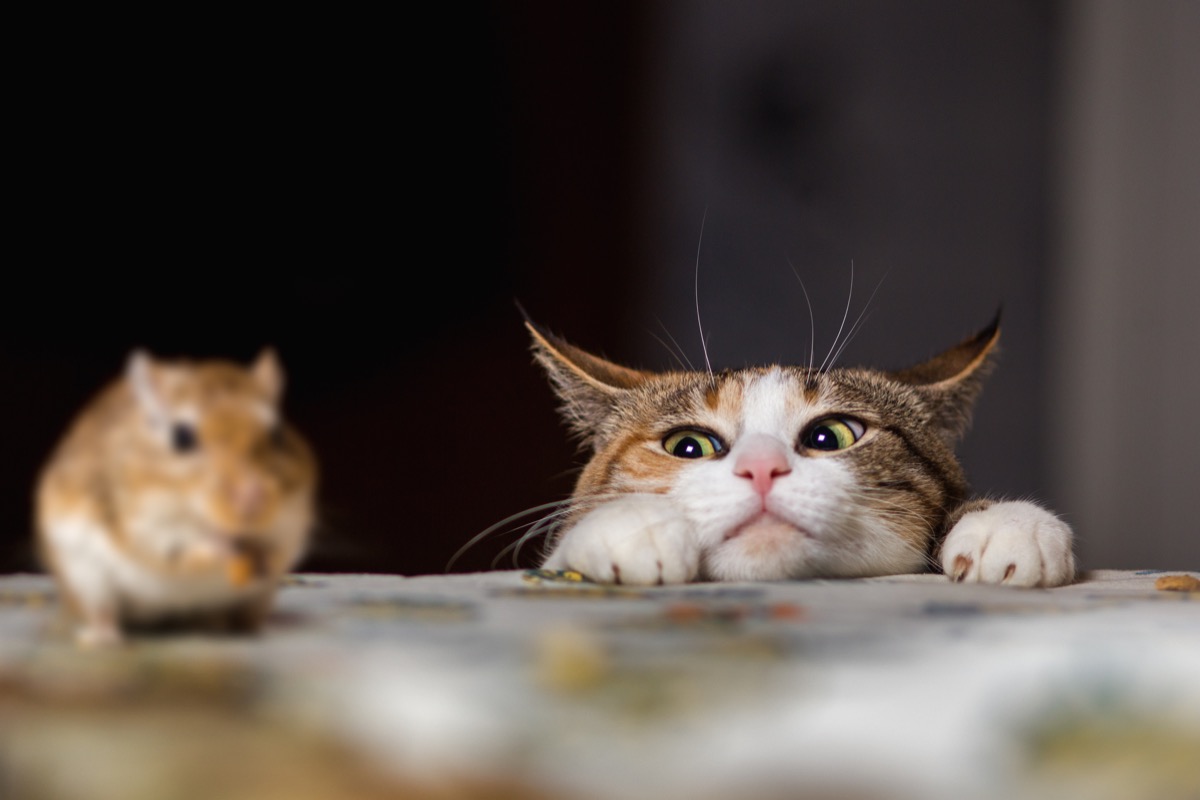
Your cat has your best interest in mind when she brings you that dead mouse. No, really—it’s true! “In the wild, cat mothers teach their young how to eat their food by bringing home dead or injured prey,” according to Live Science. “Domestic cats are no different. But in this modern age of spayed domestic cats, many female felines have no young to whom they need to pass on their hunting wisdom. By leaving a dead animal on the back porch, your cat is acting out its natural role.”
25
The world’s second-largest coral reef is no longer endangered.
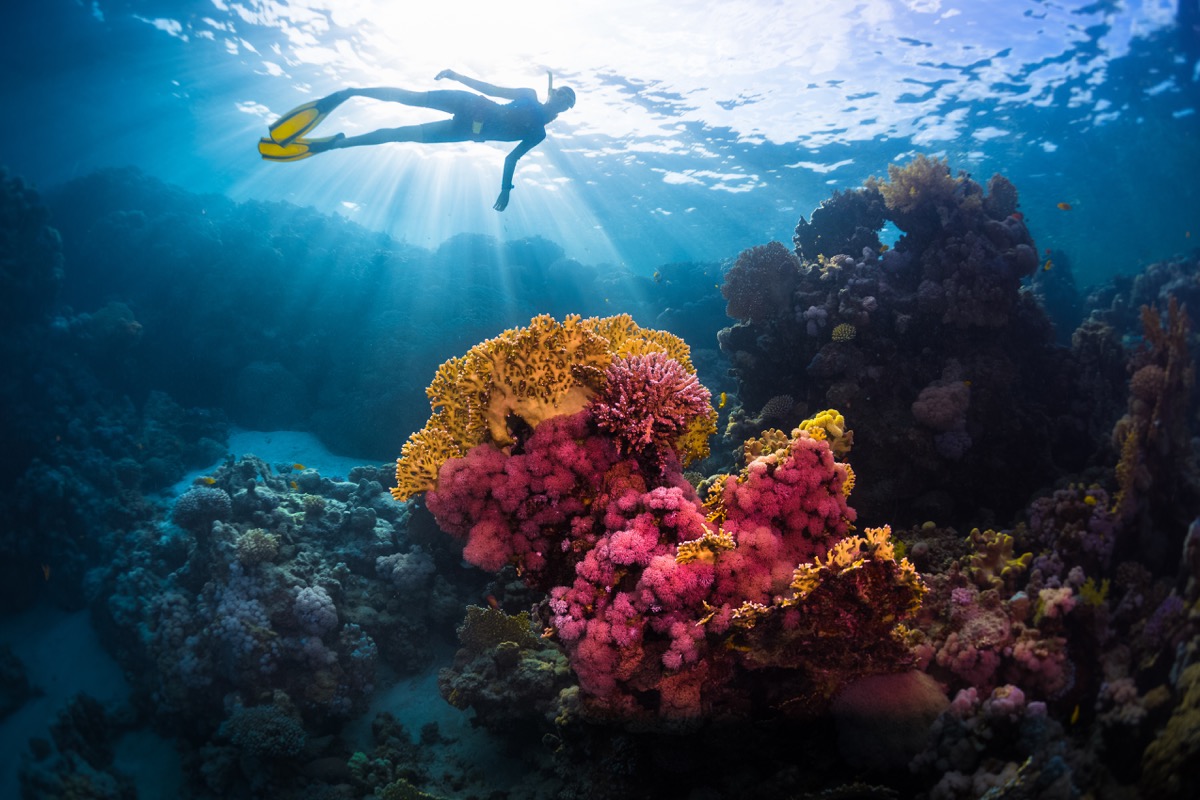
In 2018, the world received good news about the Belize Barrier Reef Reserve System, a 200-mile-long reef which is part of a 600-mile system in Belize. After a decade of work to protect and save the world’s second-largest reef, it was taken off the list of endangered world heritage sites. It was put there in 2009, after which the Central American country placed restrictions on oil drilling and fishing for sensitive species. Now, it’s believed to be safe from any further damage—as long as we continue to take care of it.
26
Scientists have discovered that humans are naturally helpful.

An oft-cited 2006 study published in the journal Science found that 18-month-old toddlers would almost always try to help an adult when the little one realized that the grown-up was struggling.
For instance, if an adult is reaching for something, the toddler would try to hand it to them, or if they saw an adult drop something, they would move to pick it up. “This requires both an understanding of others’ goals and an altruistic motivation to help,” the researchers concluded.
27
Taking naps is good for your heart.

Everyone loves a good nap, which is why it’s welcome news that making them a habit is linked to better heart health. According to a 2019 paper published in the journal Heart, people who napped once or twice a week were 48 percent less likely to have a heart attack, stroke, or experience heart failure over a five-year period compared to those who did not nap at all. The researchers note that correlation doesn’t equal causation, meaning it might not be the naps themselves that result in improved health. But, at the very least, it goes to show that you don’t need to feel guilty about that Sunday afternoon siesta.
28
Atlanta is turning seven acres of abandoned land into the largest public food forest in the U.S.
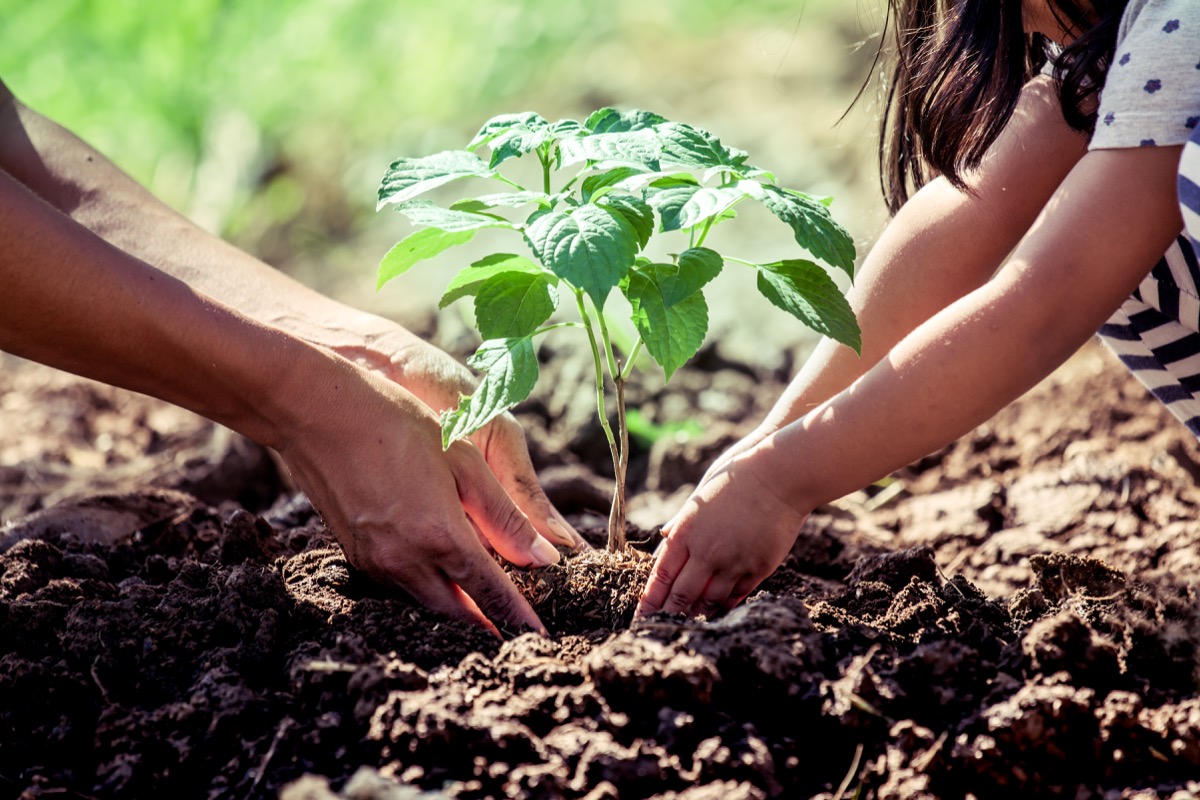
The city of Atlanta, Georgia, has decided that the best use for its unused land is to help feed its citizens via the country’s largest public food forest. So what is a public food forest? According to CNN, it’s “a public space in the city where fresh produce will grow in trees, bushes, plants, and community garden beds for the community to enjoy.” The seven-acre forest will produce a range of nuts, fruits, vegetables, herbs, and mushrooms.
29
There’s a tiny Polish village where everything is painted with pictures of flowers.

Sometime in the 19th century, the people of Zalipie, a tiny town northeast of Krakow, began painting flowers on local buildings. Originally, the paintings were meant to cover up the blackened walls left behind by soot from chimneys. But soon, they became a tradition.
Nowadays, the flowers cover everything from houses and barns to schools and churches, according to Travel & Leisure. At the end of the 1940s, Zalipie even started an annual flower-painting competition that takes place after the Feast of the Corpus Christi in June.
30
Manatees are also known as “floaty potatoes.”
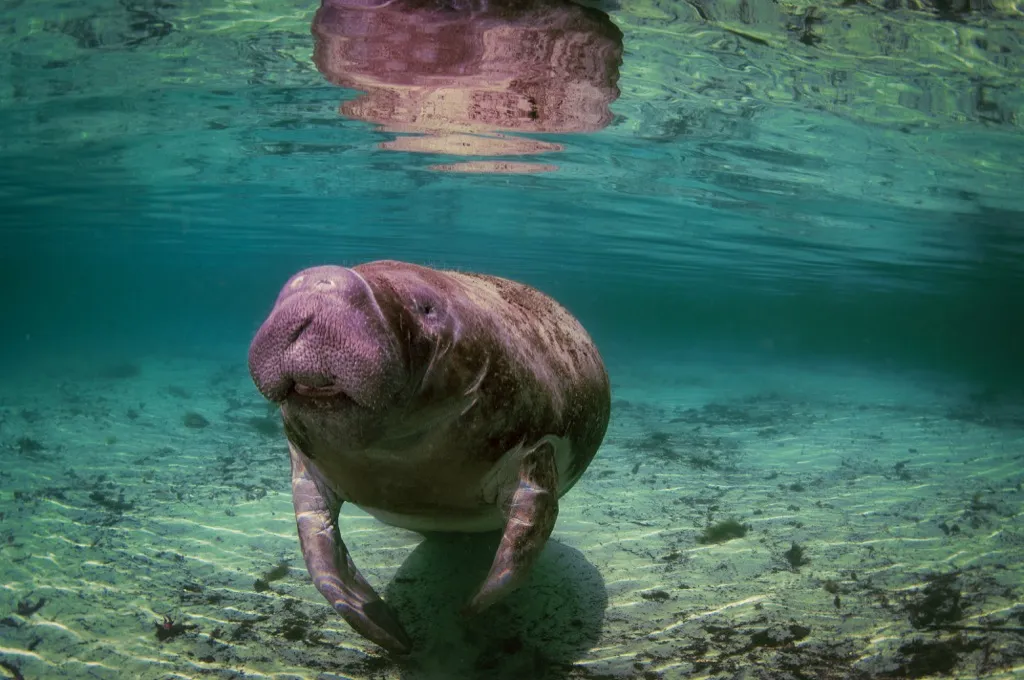
Surely you see the resemblance. Yes, there are those who call the slow-moving, water-dwelling, super-docile creatures “floaty potatoes” since they do look a little like giant gray floating potatoes. Even the National Park Service has used the term.
31
Giant pandas are making a comeback.

After being on the brink of extinction, giant pandas were removed from the endangered species list in 2016, according to CNN. Although they’re still deemed “vulnerable,” the number of giant pandas increased by 17 percent from 2004 to 2014, according to the World Wildlife Fund.
32
One country measures its Gross National Happiness instead of its Gross Domestic Product.

Since 1971, the country of Bhutan has rejected the idea that the Gross Domestic Product (GDP) is the only way to measure progress. In its place, the Buddhist kingdom measures Gross National Happiness (GNH) to determine citizens’ level of contentment. According to The Guardian, the GNH intends to measure “the spiritual, physical, social and environmental health of its citizens and natural environment.”
33
Looking at a picture of a loved one can relieve pain.

The next time you need to get a shot or have blood drawn and want to avoid as much pain as possible, bring along a snapshot of your significant other, your kids, or anyone else that you adore. One 2010 study published in the journal PLOS One found that looking at a picture of a loved one can help reduce moderate pain by around 40 percent; it even relieved severe pain by between 10 and 15 percent.
34
And looking at pictures of cute animals can make you more productive.

Looking at photos of adorable animals not only makes you feel better, but it can also make you more productive. A 2012 study published in the journal PLOS One found that “participants performed tasks requiring focused attention more carefully after viewing cute images.” Apparently, “a narrowed attentional focus induced by the cuteness-triggered positive emotion” gives our productivity a nudge.
35
The world’s smallest surviving baby weighed the same as an apple.
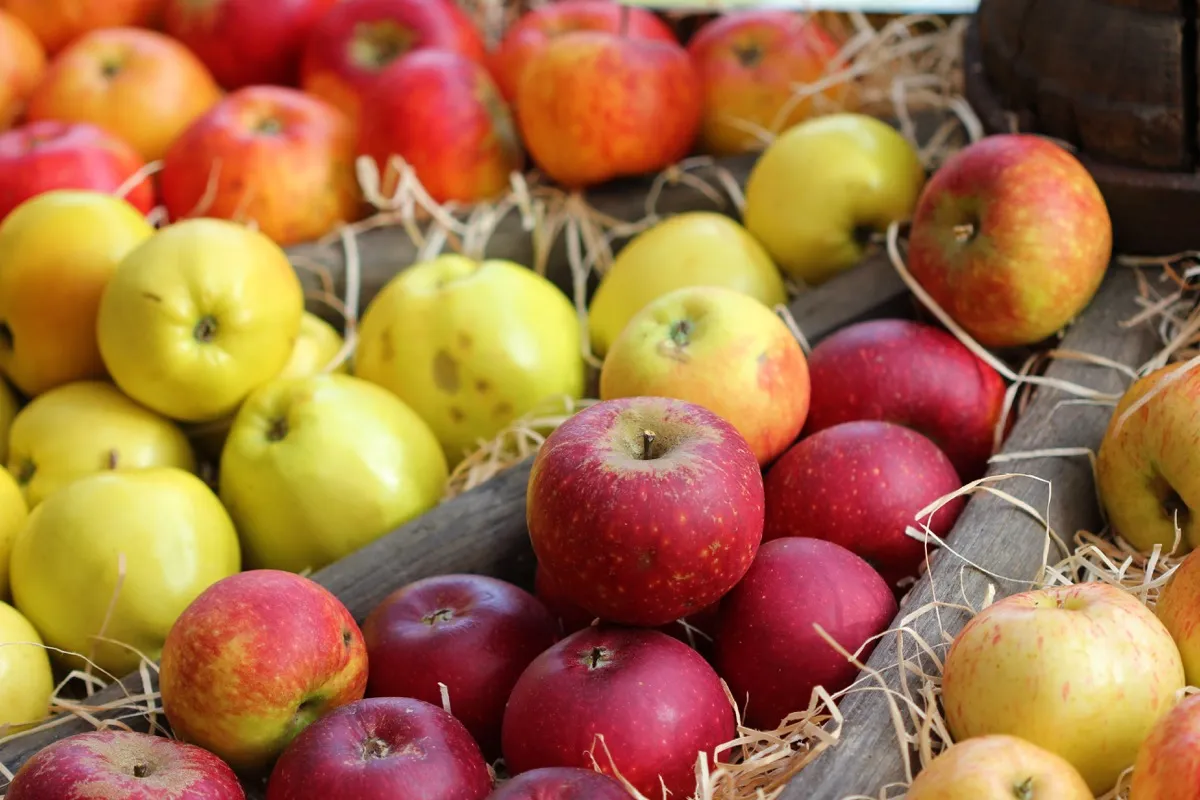
Newborn baby Saybie of San Diego, California, was born at just 23 weeks in Dec. 2018. Because of that, the little one weighed 8.6 ounces, which is about the same weight as an apple. This made Saybie the world’s smallest surviving baby, according to the Tiniest Babies Registry. At that size, there were worries about her chances of survival. Fortunately, in May 2019, Saybie left the hospital and went home weighing a healthy 5.6 pounds.
36
Going for walks in nature—or “forest bathing”—is great for your health.

The next time you need to shake off some stress and breathe in a bit of fresh air, try going for a walk in the woods, which is also called shinrin-yoku (or “forest bathing”) in Japanese. In 2016, one study published in the journal Evidence-Based Complementary and Alternative Medicine found that among other health benefits, spending time in nature significantly reduced pulse rate, depression, fatigue, anxiety, and confusion—and significantly increased vigor.
37
Hugs make you healthier.

Simply holding your loved ones tight can boost your immune system. For one 2014 study that was published in the journal Psychological Science, participants were exposed to a common cold virus and were monitored in quarantine to assess signs of the illness. Those participants who were hugged more often and felt socially supported experienced less severe signs of the illness.
38
People email love letters to trees in Australia.

The city of Melbourne, Australia, loves its trees—so much so that in 2013, they assigned each one an email address so that the public could report any tree-related issues they noticed (things like dangerous branches).
However, instead of sending messages about hazards, people began writing love letters to the trees. “Hi Tree, You are just outside my work and you make me happy 🙂 Keep growing and keep on treeing,” wrote one person. “Dear Smooth-barked Apple Myrtle, I am your biggest admirer. I have always wanted to meet you, but tragically, I’m stuck in New York,” wrote another.
39
There’s a word for when you’re waiting for someone to arrive.

Anticipation isn’t always easy to deal with, but when it happens, ideally you’re waiting for something wonderful. Or perhaps you’re waiting for someone—and in that case, you might be experiencing “iktsuarpok,” which is an Inuit word for the feeling of anticipation you get while waiting for a visitor to arrive.
40
Humans are made from stardust.
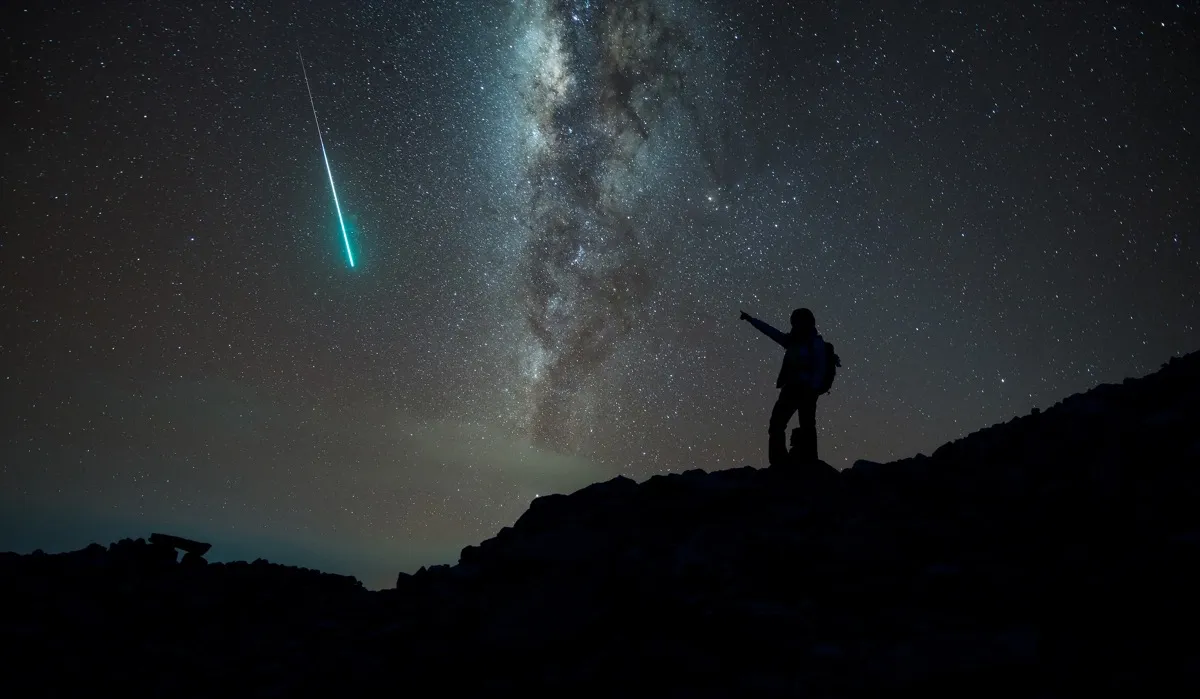
Whenever you start to feel inadequate, remember that you’re made of actual stardust. “Everything we are and everything in the universe and on Earth originated from stardust, and it continually floats through us even today,” Iris Schrijver, professor of pathology at Stanford University, told National Geographic. “It directly connects us to the universe, rebuilding our bodies over and again over our lifetimes.”
41
Playing music for plants helps them grow faster.
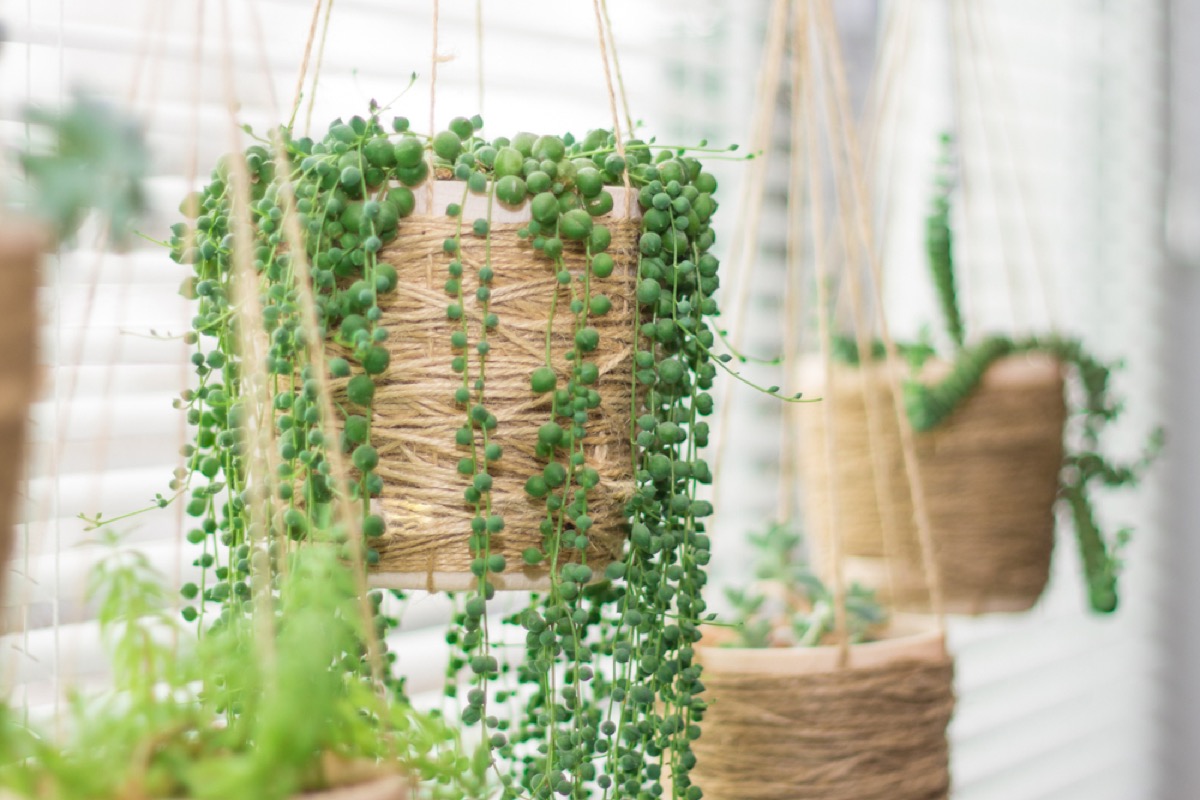
You may have heard that talking to your plants can help them grow stronger, but were you aware of the fact that music can also help them flourish faster? According to Sciencing, vibrations that travel through sound waves may “stimulate growth factors” in nearby plants. And that’s not all: “Evolution may have given plants ‘ears’ so they can hear warnings about predators.”
42
Some stray dogs in Cuba are given homes in state institutions, including banks and museums.

Around 21 formerly stray dogs in Cuba now live (and “work”) in state institutions, including gas stations, museums, banks, and even a public toilet. “They stay here and nothing happens to them,” Dalia Garcia, caretaker of a public toilet who oversees two of the dogs, told the Daily Mail in 2015. “Everyone takes care of them, no one hits them. They don’t bark and they don’t bite anyone.” The dogs are issued special I.D. cards that note where they work; the tags mean they can’t be detained by the local dog catcher.
43
Drinking coffee can help you live longer.

Granted, there is such a thing as too much coffee. However, studies have found that drinking moderate amounts of the stuff may actually help you live longer. A 2018 JAMA study of around half a million British adults found that coffee drinkers had a slightly lower risk of death over a 10-year follow-up period than non-coffee drinkers.
44
January is “Be Kind to Food Servers Month.”

Surely, you’re always kind to your waiter or waitress. But for those who need an extra nudge, January is “Be Kind To Food Servers Month.” Any time you go out for a meal or even a few drinks during the first month of the year, you might want to consider leaving a tip that’s even more generous than your usual 20 percent. And, of course, give 150 percent extra smiles!
45
And August is “Happiness Happens Month.”

Every day of every month is the ideal time to enjoy joy, but August happens to be “Happiness Happens Month.” It’s the perfect opportunity to spend 31 days celebrating whatever it is that makes you happy.
46
Rowdy goats have to wear pool noodles on their horns.
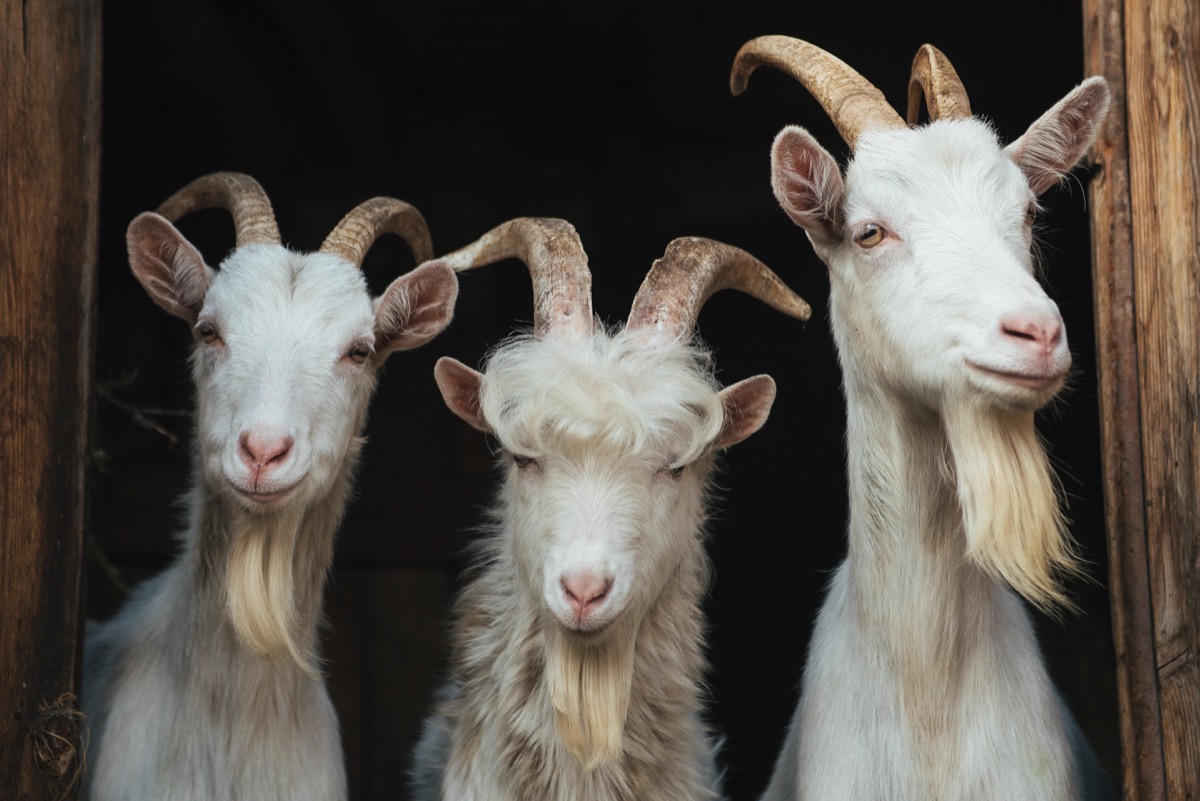
Goats love to play, which is absolutely adorable. However, if one of the animals gets a little too rowdy, their horns can hurt other animals or people. In order to keep things safe, the goat’s caretaker can pop pool noodles on the creature’s horns. Tennis balls and buckets are also used—and look just as hilarious.
47
“Armogan” is a 19th-century naval term for the perfect weather to start a journey.

Ever feel like it’s the perfect day to have an adventure? That’s “armogan.” It’s a slang term from the 19th century that those in the navy would use to describe the ideal weather for starting out on a new voyage or journey, according to The Sailor’s Word-book by William Henry Smyth. It’s actually derived from a Mediterranean word for fine weather.
48
Baby ravens were recently born in the Tower of London for the first time in 30 years.
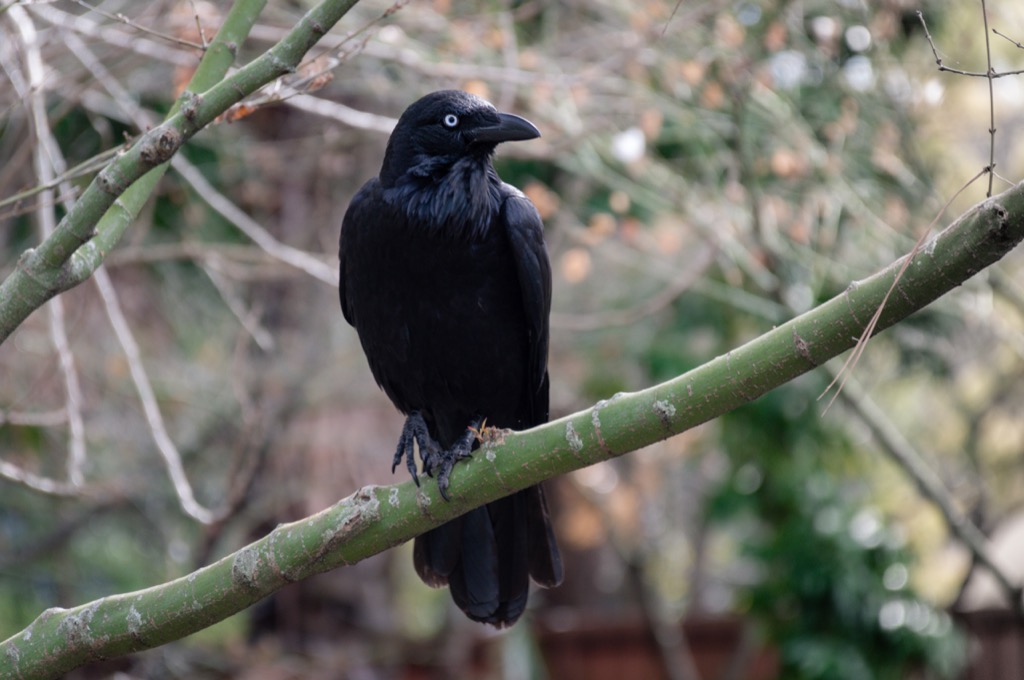
The Tower of London—a fortress that has been standing for around 1,000 years—always has at least seven ravens. That’s in response to a royal decree by King Charles II in the 17th century that said “the Tower itself will crumble to dust and a great harm will befall the kingdom” if the birds ever fled, according to Smithsonian magazine.
However, with there being fewer breeders around to provide suitable specimens these days, the Tower’s staff installed a new aviary in 2018 in an attempt to start their own breeding program. The following spring, four new babies were born. It was the first time birds had hatched there in 30 years.
49
In 2012, an entire village in Spain won the lottery.

In 2012, the jackpot in Spain reached $950 million. With stakes that high, nearly everyone in the tiny 250-person town of Sodeto bought in, playing the same numbers: 58268. And miraculously, they won! That meant each Sodeto resident took home at least $130,000—and one ticket even paid out $520,000.
50
The act of smiling can make you happier.

Still not in a great mood? Try smiling. One notable 2009 study presented at the British Psychological Society’s annual conference found that even if a smile is forced, the brain still responds to the expression by releasing chemicals that improve your mood.